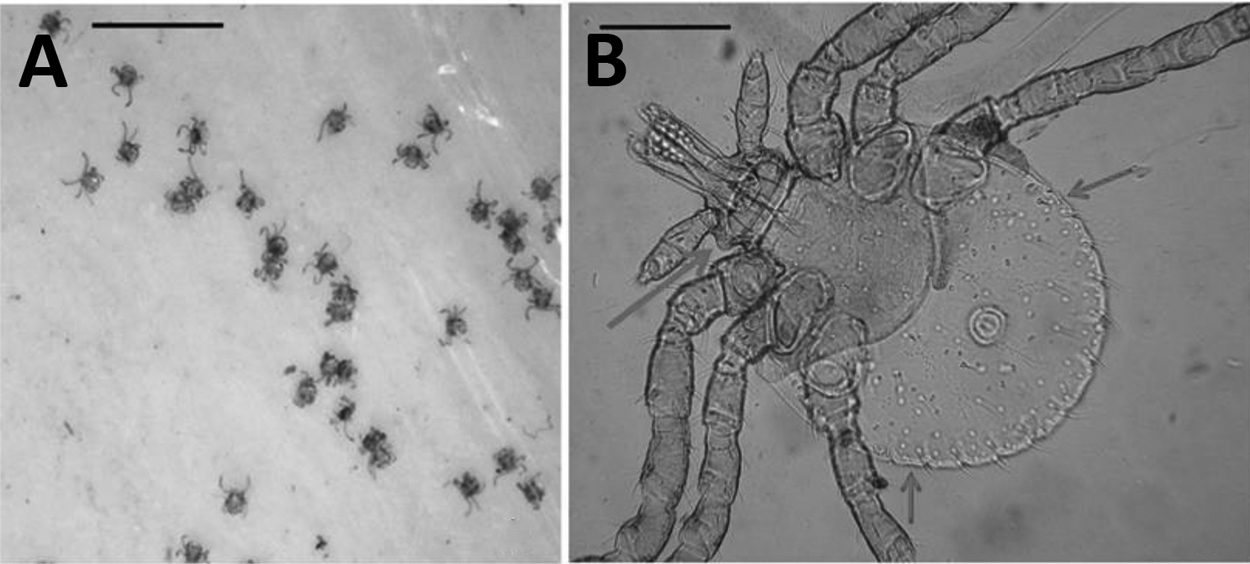Volume 25, Number 8—August 2019
Research Letter
Early Questing by Lone Star Tick Larvae, New York and Massachusetts, USA, 2018
Figure

Figure. Larvae of lone star ticks collected from New York and Massachusetts, USA, in 2018. A) Portion of lint roller tape with cluster of larval lone star ticks. Scale bar indicates 10 mm. B) Rounded idiosoma, 11 festoons (short dark arrow marks festoon 1; longer dark arrow, festoon 11); rounded edge of the basis capitulum (long light arrow), and palps longer than wide. Scale bar indicates 210 microns.
Page created: July 16, 2019
Page updated: July 16, 2019
Page reviewed: July 16, 2019
The conclusions, findings, and opinions expressed by authors contributing to this journal do not necessarily reflect the official position of the U.S. Department of Health and Human Services, the Public Health Service, the Centers for Disease Control and Prevention, or the authors' affiliated institutions. Use of trade names is for identification only and does not imply endorsement by any of the groups named above.